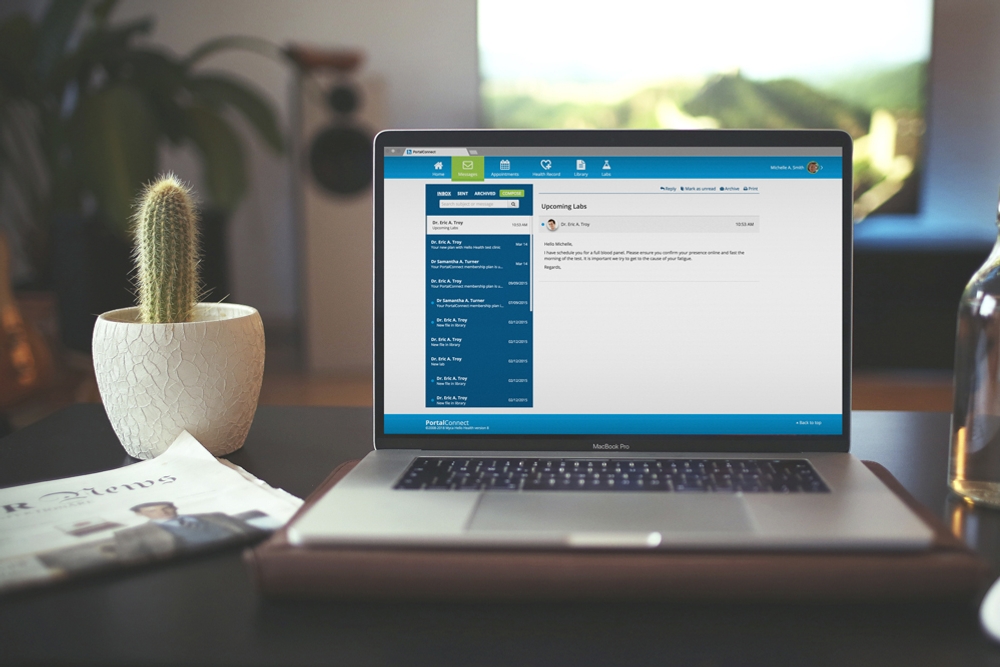Barriers and Facilitators to Patient Portal Adoption and Use
What is the first thing that comes to mind when hearing “Patient portal?” Is it access to health information, or video visits and messaging with medical professionals, or even a place to schedule virtual appointments?
Most of the hesitation surrounding these platforms and tools can actually be attributed to similar barriers, even coming from different healthcare stakeholders. The Journal of Medical Internet Research conducted a qualitative study on the Barriers and Facilitators Affecting Patient Portal Implementation from an Organizational Perspective.
| Level |
Barriers |
Facilitators |
|
Level
Innovation
|
Barriers
- Privacy and security
- Lack of accessibility
|
Facilitators
- Perceived usefulness
- Perceived ease of use
|
|
Level
Individual professional
|
Barriers
–
|
Facilitators
- Positive attitude
- Motivation to change
|
|
Level
Patient
|
Barriers
Lack of sufficient eHealth literacy
|
Facilitators
–
|
|
Level
Social context
|
Barriers
Negative attitude/opinion of medical professionals
|
Facilitators
Positive attitude/opinion of medical professionals
|
|
Level
Organizational context
|
Barriers
- Lack of resources
- Lack of time and increased workload
- Lack of suitable specialist staff
- Structure of organization
|
Facilitators
- Management support
- Communication to promote portal
|
|
Level
Economic and political context
|
Barriers
Financial difficulties
|
Facilitators
Facilitating laws and regulations
|
This study interviewed medical professionals, managers and employees in the IT department. The following chart represents the top common barriers and facilitators that were raised during interviews according to the Grol and Wensing model’s 6 levels.
Most of the barriers that were brought up are attributable to patient portals built and sustained in-house, with much of the workload, maintenance and debugging to be done by the practice or hospital. When outsourcing a patient portal or simply using an EHR that has a built-in patient portal, most of the barriers are eliminated, heightening the facilitators.
Overcoming Barriers
When addressing innovation barriers, patient portals are not immune to hacks, just like any other institution or company that works online. However, as hospitals and clinics abide by HIPAA compliance, as do their EHRs, there is no more chance of hacking a patient portal as there is to hack the EHR itself.
Patients and clinicians need to understand that the information is already online within the EHR, therefore taking advantage of the benefits of the portal itself is in the best interest of all parties involved.
The hesitance towards patients and their knowledge of eHealth literacy is often worse when speaking to them in person rather than writing to them. Dr. Daniel Sands, health information technology consultant and part-time primary care physician at Beth Israel Deaconess Medical Center in Boston perfectly explains the importance of patient portals and the inclusion of secure messaging within them for exactly this reason:
We know from study after study, when patients leave the office or hang up the phone, they remember less than a third of what we say to them, so that’s going to lead to confusion, poor outcomes, frustration, and so on. Secure messaging is different because it has permanence to it. Patients can look at it. They can read it again. They can share it with their loved ones.
Within an organizational context, it can be reassuring to know that patient portals within EHRs come with their own support and IT departments. If something goes wrong or you need additional support, teams are available to answer any and all questions, some having their servers and tech support in the same building, ensuring problems are solved quickly and securely.
When it comes to the perceived lack of resources, many physicians think that receiving messages from their patients will overwhelm them and significantly increase their workload. However, the volume is generally much less than they expect. Many messages can be dealt with in minutes, requiring little effort and saving a lot of time for clinicians in the long run.
Financially speaking, patient portals that come with an EHR don’t put a dent in a practice’s pocket. Furthermore, some patient portals have the option of generating revenue. As these tools have important value for many patients, the vast majority of them are willing to pay or are currently paying a monthly fee to access their information within the portal.
If we quickly address resistance on the patient’s end, many physicians using patient portals talk about starting the conversation with their patients during their in-office visit, being able to utilize office staff to answer questions immediately and can even go as far as signing them up in the office. With first contacts being directly in the medical office, patients are more prone to signing up and feel more secure about the platform itself.
Patient Portals often come loaded with features that help physicians build stronger relationships with their patients, allowing them to access their medical files and take charge of their health.

